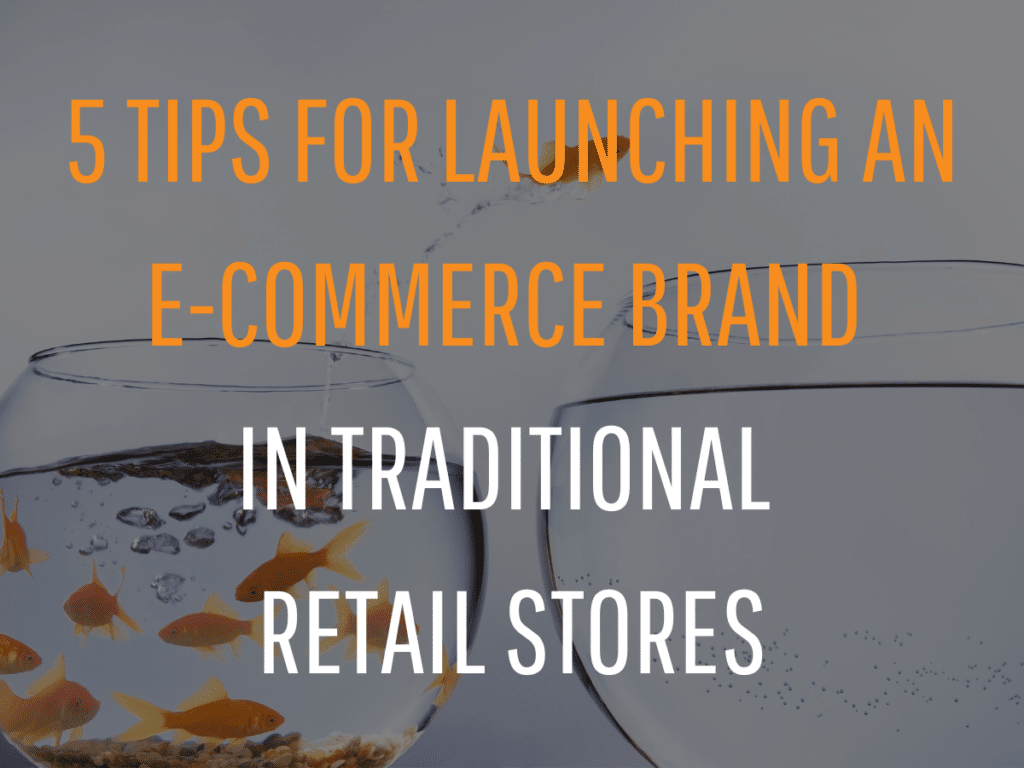Launching e-commerce CPG brands into traditional retail stores is often an attractive strategy to accelerate growth.
With nearly 90% of retail sales occurring in brick and mortar, as reported by Retail Dive, the opportunity to get in front of new customers is compelling. Ecommerce-born brands like Harry’s, Native, and Mielle Organics have demonstrated eye-popping success in traditional retail. Meanwhile, Bucketfeet expanded into Nordstrom and Bloomingdale’s to reach new consumers, then pulled back from those distribution deals just a few short years later. How do you know your brand is retail-ready? With so many brands on the shelf, what does it take to stand out and succeed in traditional brick-and-mortar stores?
For brands looking to expand into traditional retail, it is important to know what it takes to be retail-ready. Understanding how to get your brand into retail is actually just the first step. Standing out from the competition in a traditional retail environment is the key to achieving accelerated growth. Here are 5 key factors companies need to consider to maximize success in launching an e-commerce brand in traditional retail stores.
1. Build a Clear Brand Story and Identity
Building a clear brand story and identity is important for any brand and essential for e-commerce brands moving into traditional retail. With tens of thousands of products in traditional retail stores, it is important to differentiate your products from the competition.
Declining consumer attention spans means your brand has just 8 seconds to create an impression that will set you apart in consumers’ minds. A memorable impression that helps them recognize your products both online and in-store. A compelling brand story explains your brand’s mission and purpose succinctly to your target consumer. It tells your unique value proposition and differentiates your brand from competitors. A clear brand identity brings your brand story to life in memorable ways through your logo, brand colors, and design.
2. Ensure A Strong Presence on the Shelf
As a new brand in traditional retail, getting noticed is important. Standing out versus your competitors on the shelf helps grab consumers’ attention. Retail-ready packaging encompasses both the consumer experience and the retailers’ needs. Eye-catching branded packaging design with a professional look and feel helps build consumer trust in your brand and helps consumers notice your brand on the shelf. Durable packaging materials, that hold up through the shipping and unboxing process, help ensure your brand looks as good on the shelf as when you shipped it from your facility. As brands expand from eCommerce into traditional retail it’s also important that packaging meets retailers’ needs including industry standard barcodes on both product packaging and product cases, and case counts that align with retailers’ inventory capabilities.
3. Develop an Engaging Marketing Strategy
Engaging marketing is also key for e-commerce brands moving into traditional retail. As the competition for consumer attention is high, it is important to create campaigns that are creative, memorable, speak to customers, and are powerful both in digital and in retail channels. Many e-commerce brands have benefited from digital and social media marketing with fast asset production and flexibility to make changes that accommodate real-time learning. In-store advertising requires planning. It’s important to plan for longer asset development timeframes to align with retailer asset requirements and for the production of physical, printed materials. A strong creative partner and experienced marketing lead can help bring engaging campaigns to life in print, to help ensure online campaigns come alive powerfully in the retail environment.
4. Establish a Retail Marketing Strategy & Budget
When e-commerce brands move into traditional retail, having a retail marketing strategy and budget is essential for success. With the right strategy, you can maximize your retail growth by determining upfront retailer fit, relevant messaging for targeted shoppers, promotions to drive trial, and how to maximize your brand’s in-store presence. Properly allocating budget and resources to retail marketing initiatives, product inventory, and merchandising will help your drive brand awareness with consumers shopping in traditional retail stores.
5. Create a Retailer-Focused Pitch
Having a good retail pitch is essential for e-commerce brands seeking distribution in traditional retail stores. A well-crafted retail pitch should include your unique value proposition, key features of your product or service, how it solves customer problems, evidence that customers choose you over other brands, product pricing, evidence of your robust supply chain, and how your marketing will help drive purchases in retail. Presenting a clear, concise, compelling pitch that helps retail buyers quickly understand what attracts consumers to your brand is a critical tool in demonstrating how likely your brand is to be successful in traditional retail.
Preparation & Strategy
Achieving retail distribution and success requires preparation and strategy. Successfully distinguishing your brand in e-commerce creates a strong foundation. Executing digital marketing well through SEO, organic and paid social media strategies, Influencers, and email marketing is important to driving brand awareness and trust. To be retail-ready, e-commerce brands need to make sure they understand the differences between selling in e-commerce and selling in traditional retail. Getting retail-specific advice, tapping into Sales and Marketing leads who deeply understand what it takes to win in retail, and planning for resources to execute retail strategies are important to achieving and maximizing the results of gaining retail distribution.
Expanding business into retail is no small feat. It requires careful preparation and strategy to ensure that your brand stands out in traditional retail stores and drives sales. Chameleon Collective’s years of expertise can help your team expand your e-commerce business to traditional retail, get in touch today.





